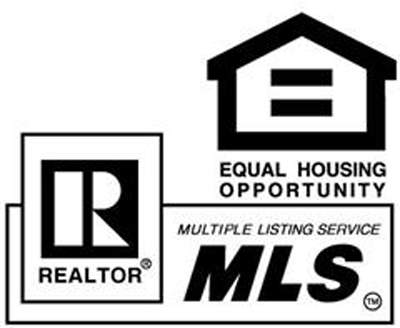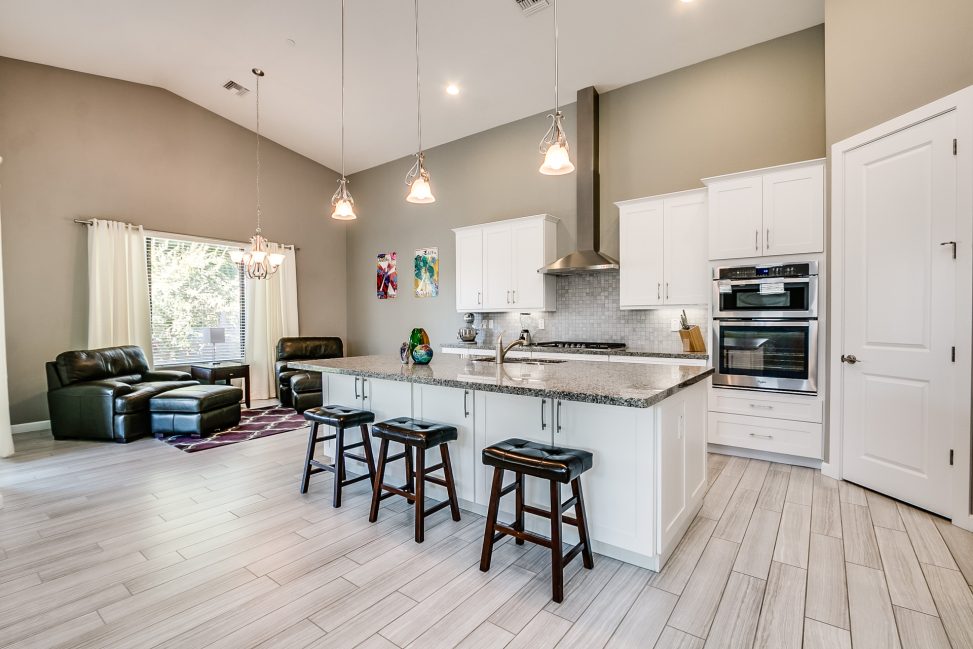The laws of supply and demand continue to swing the economic pendulum to those looking to sell both single-family and multifamily residential dwellings throughout the Phoenix metropolitan housing market.
Data shows the Phoenix housing market is on good footing with all economic indicators — inventory levels, foreclose rates and both median sale prices and listings — illustrating a healthy housing market dominated by single-digit appreciation levels and fewer and fewer distressed homes.
Real estate experts who spoke with Independent Newsmedia say an underlying current of economic activity is beginning to show a level of disruption through the local housing market: the vacation rental.
Real estate experts suggest more tracking measures need to be in place as the vacation rental game appears ready to boom in the Valley of the Sun.
“We are seeing good stable demand, we are seeing a regular drop in supply,” said Senior Real Estate Analyst Tina Tamboer in a July 25 phone interview. “We are seeing fewer listings to the marketplace. Even in the summer time now, it is not a bad time to be in the market. From a sellers standpoint it is not a bad idea to be a seller in the summertime.”
Ms. Tamboer works at The Cromford Report, which is a data-driven real estate report provided to Realtors throughout the Phoenix metropolitan area.
As of July 21 there were 16,490 active listings for single-family homes in Phoenix, while Scottsdale had 2,458 active listings and the Town of Paradise Valley featured 166.
“We are seeing everything that is typical of a true sellers market,” Ms. Tamboer said. “We have a job market that is really good right now and it’s not based on the real estate like it was back in ‘07. That is more stable and cyclical so we have a lot of good things happening.”
Through June, numbers provided by The Cromford Report show it takes about 67 days for a single-family home to be sold in metro Phoenix while it takes 100 days in Scottsdale and a 169 in the Town of Paradise Valley.
“There are lot of people who own their homes outright or have a lot of equity in them — it is a very stable market from that perspective,” Ms. Tamboer said. “The appraisal process is now beholden just to the banks and are now held accountable for their appraisals as those who are coming to purchase are much more wary of buying over appraisals. There is less ability and willingness to pay over appraisal.”
In all housing sectors of the Phoenix metropolitan area, Ms. Tamboer says she is comfortable calling the market stable but did point out luxury multifamily housing investment has been staunch over the last few years.
“The one area I would be concerned about is the luxury multifamily housing,” she said of condominium products seeking $350,000 price points attached to, in some cases, a $500 monthly management fee.
“We need the units, we have the demand for the units, but do you want to pay $350,000 and a $500 HOA fee for a condo? Demand may be over for that product. I don’t think we are seeing one — a luxury condo bubble — but perhaps some risky decisions in certain areas, but that’s how it always is.”
New emerging trends
The Scottsdale Area Association of Realtors President and CEO Rebecca Grossman says while positive economic activity dominates the local housing market dwindling inventory is stoking both appreciation valuations and seller wallets.
“Housing statistics are looking very good, but we still have a lack of inventory,” she said in a July 25 phone interview. “For the buyers, typically in the summer months, buyers are going to be diminished, however, our members are very busy this season.”
An underlying trend Ms. Grossman points out is robust rental income continuing to entice investor groups to hold onto properties longer than in previous downturn cycles.
“They are now reaping the benefits of that downturn,” she pointed out. “Now because rental income is good they are holding onto their properties. But we are not going to see a shift in inventory until they move these properties that were purchased during the most recent downturn. Until then, we will continue to have light inventory.”
Another trend that continues to emerge in the local housing market is the pursuit of affluent clients looking to downsize in lock-and-leave properties in Scottsdale and throughout the Phoenix metropolitan area.
“We are seeing people who are looking for downsizing options — there is going to be a point that we are not producing enough of those housing options,” she said. “I do see some good things happening like in Cave Creek and Carefree as they are getting new homes built that are attainable.”
But Ms. Grossman points out Scottsdale is responding well to the need for new housing options as Baby Boomers begin to find a new style of dwelling for the golden years in loom.
“One of my concerns is they (the market) are only responding to the higher-end market,” she pointed out. “You have to have sustainable housing in any community. If people are not able to enter into the housing market then you are going to have a snag somewhere.”
But Ms. Grossman says she would challenge the notion of the Phoenix metropolitan area as a traditional sellers market.
“I think because of the shortage of inventory I would not consider it traditional from the standpoint that there are more buyers then there are homes available,” she said.
A Scottsdale snapshot
The Scottsdale housing marketplace has 5 percent fewer single-family homes for sale than it did last year, according to July market data provided by Walt Danley Christie’s International Real Estate.
In June, Scottsdale’s active listings dropped by 13 percent — from 1,985 listings to 1,735 listings — but saw 332 closed sales, which is a 17 percent increase compared to the same time last year.
The average price per square foot for real estate in the city of Scottsdale is $260.
Realtor Gary Shapiro of Coldwell Banker Residential Brokerage says he has been selling Scottsdale since the time when “All in the Family” was must see television and Carroll O’Connor was a household name.
“For the past 46 years I’ve been a Scottsdale Realtor, our area has maintained a tradition and consistent history as a coveted real estate destination,” he said in a July 26 statement. “Despite temporary market fluctuations, we’re free of the typical disasters that jeopardize other Sun Belt areas. People appreciate our Western hospitality, our lifestyles and they genuinely love living here. So, residential real estate continues to prosper.”
Mr. Shapiro explains since the time of bell bottoms and the party wagon, becoming a homeowner is a more competitive enterprise.
“Private investors, amateur and professional flippers, and Wall Street-type conglomerates are active in our market,” he said. “They make it more difficult for traditional family and first-time buyers to participate in the American Dream.”
As with real estate professionals around the Valley of the Sun, Mr. Shapiro agrees the vacation rental game is playing a role in local neighborhoods.
“Vacation rentals are playing a role, and becoming more prevalent,” he said. “These three- to four-day rentals pose a serious threat to the peace and tranquility that neighbors used to enjoy,” he said. “It’s also a fascinating debate over private property rights. You can’t blame people for wanting to be in Scottsdale.”
A view from paradise
The Paradise Valley housing marketplace has 12 percent fewer single-family homes for sale than it did last year, according to July market data provided by Walt Danley Christie’s International Real Estate.
In June, Paradise Valley’s active listings dropped from 378 to 334 active listings but saw 35 closed sales, which is a 45 percent increase compared to the same time last year.
The average price per square foot for real estate in the Town of Paradise Valley is $354.
“It’s a great time to buy in Paradise Valley,” said Walt Danley in a July 25 statement. “The things that have made our town a desirable place to live don’t change with market cycles. The natural beauty, the convenient location and the relaxed lifestyle are here every day.”
Mr. Danley is President of Walt Danley Christie’s International Real Estate. He points out inventory levels are playing a role in the luxury housing sector, which is generally considering a price-point above $750,000.
“There is a lack of ‘good’ inventory right now,” the industry expert said.
“By ‘good’ I mean the types of homes that buyers truly want. Buyers today want newer homes with clean lines and open, flowing floor plans. Most buyers want to find something that they can move into without having to do too much work. Properties that fill this need sell quickly if they are priced appropriately.”
Even in the luxury marketplace, Mr. Danley points out size doesn’t always matter.
“The trends we are seeing have been fairly consistent for the last couple of years,” he explained. “Most buyers want exceptional quality and great finishes, but they really don’t want 12,000 square feet. The emphasis is on quality and not quantity.”
Vacation rentals are less of a concern for the luxury housing market as oftentimes in the Town of Paradise Valley clientele looks to experience a community before signing on the dotted line.
“We consider vacation rentals to be for time frames of 30 days or less — more typically a week or two,” he said.
“They really don’t have an impact on the housing market. I would assume they have more of an impact on the resorts in the area. The seasonal rental market, in which a tenant rents for 2-3 months, has always been a factor in Paradise Valley. Some people use a seasonal rental to ‘test drive’ our area and many end up purchasing a home in our market.”
Source: The Scottsdale Independent; “Tight inventory, emerging trends shape the pockets of the metropolitan housing market” (July 28th, 2017)



